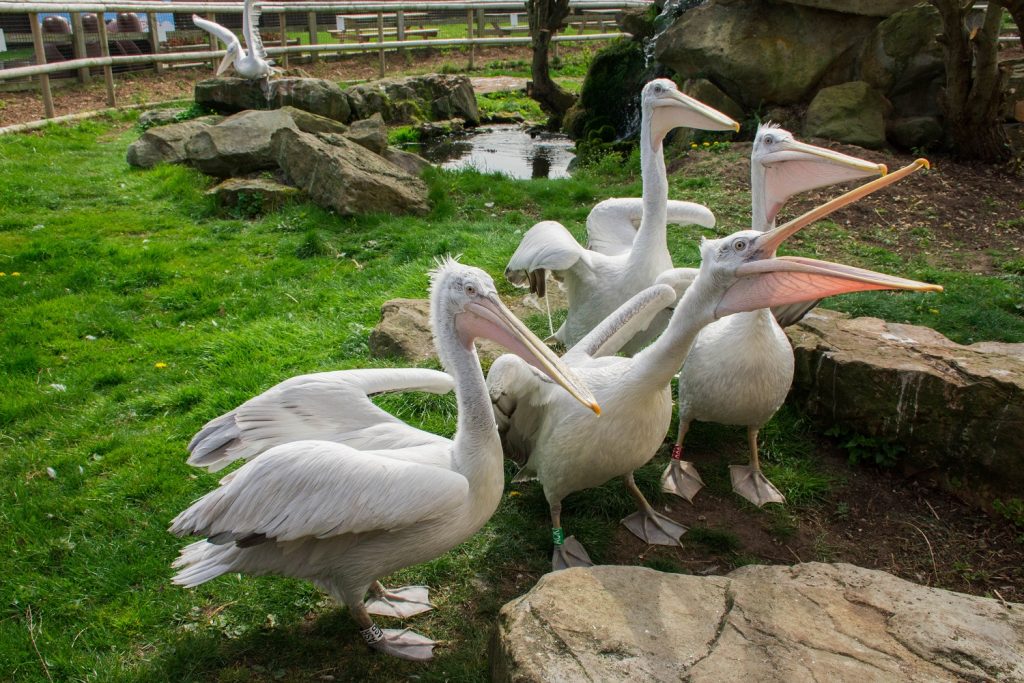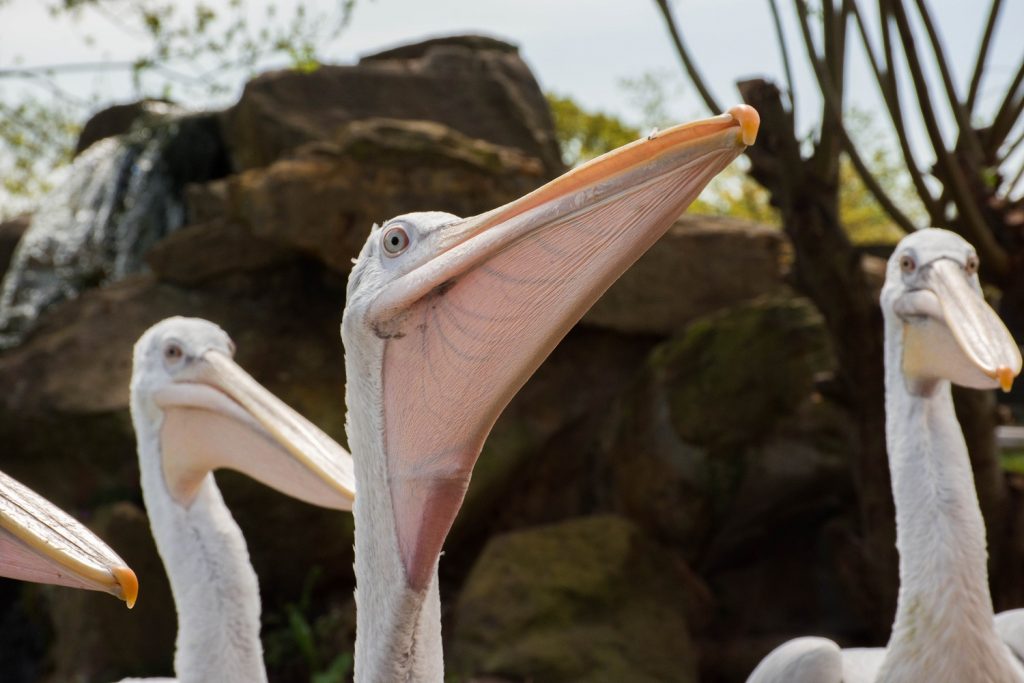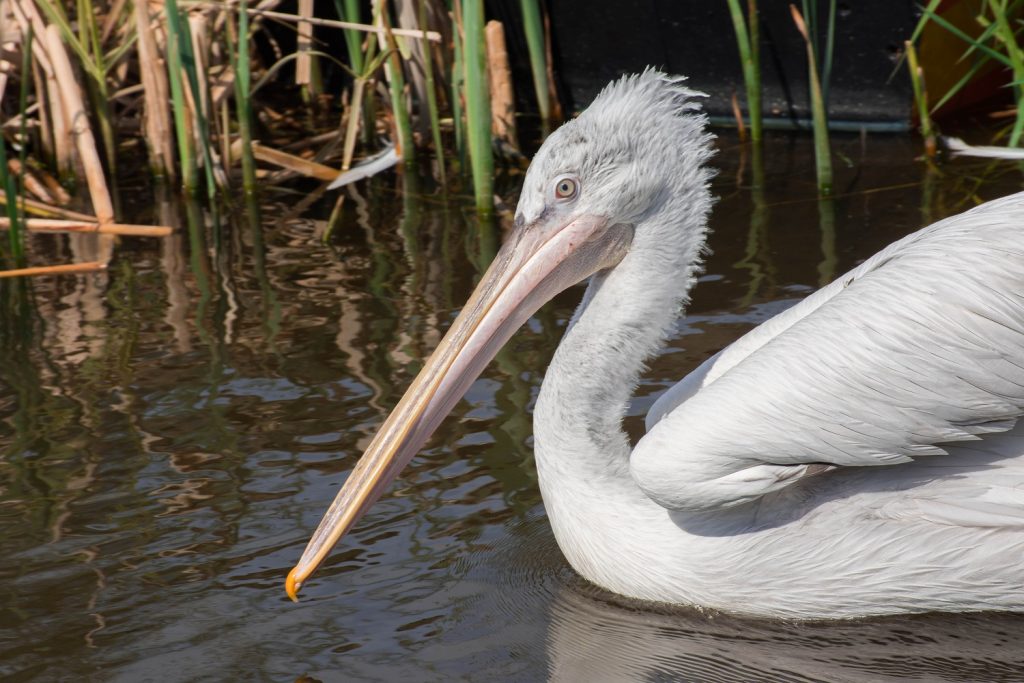The Dalmatian pelican is something to behold, its vast wingspan and powerful bill appearing like something from a different age. But, there’s more to these magnificent birds than sheer size alone, as we’ll explore today.
From its preferred habitat to its crafty method of catching a meal. We’ll showcase all that’s great about this wonderful bird. Use the links below to look around or read on for the complete guide.
Quick Links
- Key Facts and Stats
- What is it?
- Where is the Dalmatian Pelican Found?
- 5 Amazing Facts About the Dalmatian Pelican
The Dalmatian Pelican: Key Facts and Stats
Get to know these wondrous winged behemoths with our helpful Dalmatian pelican fact file below.

What is the Dalmatian Pelican?
The Dalmatian pelican is a freshwater bird which is among the biggest flying bird species on the planet. As heavy as a swan, with a wingspan matching similar to a great albatross. They’re truly a sight to behold as it soars through our skies.
While the Dalmatian pelican is similar to other pelicans, carrying a huge bill with a gizzard pouch. There are several characteristics which set it apart, chiefly its size, colour and feathering. For example; the Dalmatian has grey plumage compared to other species. Also, its wings are tipped with black – which happens to be one of the easiest ways to spot one.
One characteristic that Dalmatians share with other pelican species is the tendency to live and migrate in flocks.

Where do they live?
The Dalmatian pelican is classed as a short-to-mid range migratory bird. This means it ranges relatively short distances for breeding and overwintering purposes. When we say ‘short’, however, that’s only in relation to other bird species. It still roves over some truly vast distances. Often from the British Isles to the Taiwan Strait or Siberia to the Persian Gulf.
As with other pelican species, the Dalmatian is found in lakes, rivers, estuaries and deltas, particularly in low-lying wetland areas. During the winter, the birds stay close to ice-free lakes in Europe. Being known to return to some water bodies which are particularly sheltered. One of their favourite habitats in Europe is thought to be the Danube Delta. A huge natural wetland close to the Black Sea.
Historically, Dalmatian pelicans were a relatively common sight in mainland Britain. They disappeared in the late medieval period, assumably as a result of overhunting. In recent years, however, there have been several sightings of Dalmatian pelicans on our shores once more. Particularly in parts of Cornwall, Devon and the wetlands of Norfolk.
5 Amazing Facts About the Dalmatian Pelican
Keen to know more about this fabulous feathered creature? Join us as we take a look at some of the incredible discoveries biologists have made about the Dalmatian pelican.

1. They could be the world’s biggest flying bird
We’ve already touched on the sheer size of the Dalmatian pelican, but just how big are they? Here are a few comparisons that are sure to blow you away:
- The Dalmatian pelican can grow up to 1.8 metres in length – that’s 5ft9. The average height of a man in the UK.
- Their wingspan is even more impressive. At over 3.5 metres, they rival that of the wandering albatross. Which is widely considered to have the largest span of any bird on Earth.
- To put their 3.5-metre wingspan into perspective, that’s roughly the same length as a family hatchback.
- Dalmatian pelicans weigh an average of about 12 kilograms. This might not sound like much, but it’s about the same weight as a fully-grown dachshund!
2. They’re a one-partner kind of bird
Pelicans, like many other bird species, are monogamous. This means, that when they’ve found a mate, they normally stay with their partner for life. Raising chicks, migrating, and living together. Cue a cute ‘aww’.
Indeed, Dalmatian pelicans are highly social creatures, and have been observed nesting in small groups; this extends to how they migrate too. They are known to integrate with other species of pelicans. Chiefly the great white pelican, which shares a similar habitat preference.

3. They return to the same breeding grounds for years
Despite migrating vast distances throughout Europe and Asia, Dalmatian pelicans usually return to the same breeding grounds over multiple years. Selecting nesting sites for their wetland habitat. Consisting of dense vegetation, which the birds trample down with their large, heavy feet. After repeat uses, this trampling can cause the ground to become too muddy for nest-building. This is when the pelicans tend to move on to a different breeding ground.
4. They have rather large mouths
Dalmatian pelicans are big eaters, as a result, they eat around 1.2 kg of fish every day. To achieve this, their huge bills and gizzard pouches come in very handy.
When hunting for fish, pelicans swim very slowly before suddenly dunking their heads to catch a fish. Snapping them up in their huge bills, as well as masses of water. Once their beak is full, they push their heads backwards, expelling the water from the gizzard pouch. Enjoying the fish whole, in one big gulp.
Dalmatian pelicans are adept and efficient hunters and have often been observed hunting in flocks. They collaborate to corral a school of fish into the shallows of a lake or river. Then let their massive mouths take care of the rest.
5. Their Numbers are in Sharp Decline
Sadly, Dalmatian pelican numbers are falling rapidly, undergoing a particularly rapid decline in the 20th century. The IUCN red list has the Dalmatian Pelican listed as “near threatened”. This signals a very real risk of extinction in the coming decades.
Biologists estimate around 10,000-20,000 are left in the wild. With about 3,500 breeding pairs. What is so troubling about the decline in their numbers is that it’s unique to this specific species; similar animals, like the great white pelican, have seen nowhere near as steep a decline over the past century.
There are many factors that impact Dalmatian pelican numbers, including:
- Habitat loss – Loss of habitat is the single biggest threat to pelican populations. Humanity is destroying wetlands and floodplains to make room for developments. Meaning, that these birds are losing the low-lying environments in which they breed and nest.
- Hunting – In countries such as Mongolia people hunt Dalmatian Pelicans for their bills. It’s believed, that on any given day at a market in Mongolia, there may be 50 pelican bills on sale.
- Killed by fishermen – Some Fishermen think pelicans are a threat to their livelihood. The belief being they contribute to depleted fish stocks. Essentially killing them to preserve profit.
We hope you’ve enjoyed learning about one of the world’s most impressive birds, the great Dalmatian pelican. At Blue Planet Aquarium, we’re proud of our work in helping to safeguard this incredible species; why not pay us a visit, and get up close to these magnificent animals? For information and tickets, visit the homepage.
